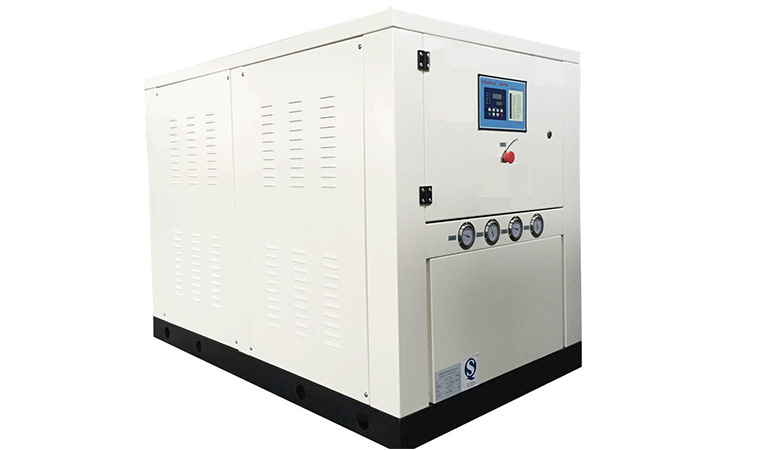The different types of process coolers are divided into two categories: (1) vapor absorption and (2) vapor compression. Vapor compression coolers are the most common and include (1) air coolers and (2) water/fluid coolers. The coolers are further classified according to the type of compressor technology used: (1) centrifugal type (2) scroll type (3) reciprocating type and (4) screw.
Chillers are refrigeration systems that help to cool residential/commercial spaces, machinery, industrial operations, and industrial chemicals. These units are energy-efficient, cost-effective, and time-effective. Without these systems, production goals are often not achieved.
Types of chiller
Water chillers are divided into two categories: vapor compression chillers and vapor absorption chillers. Vapor compression refrigerators use electromechanical compressors to force the refrigerant around the system, while vapor absorption refrigerators use heat to move the refrigerant around the system.
Vapor compression coolers are the most commonly used and can be divided into two subcategories: air coolers and water coolers. Let’s take a quick look at how these tools work, their applications, and their advantages and disadvantages.
How do air cooling and chillers work
The air cooler and the water cooler have the same components: evaporator, compressor, condenser, and expansion valve. In addition, the mechanisms of the two are very similar. The compressor pushes the refrigerant through the condenser, expansion valve, and evaporator into the cooler, and then returns to the compressor.
The main difference between air coolers and water coolers is the way in which excess heat is discharged. The air cooler refers to the air that removes air when the air cooler uses water.
Air cooler
Air-cooled chillers use air to dissipate heat by using a fan to drive air through the exposed tube of the condenser. Although air coolers require more energy than water-cooled coolers, they may be a good choice for fixed cooling. The air cooler is easy to install and can usually be installed outside the building (no additional space required). Compared with chillers, chillers are more prone to clogging and recirculation problems.
Chiller
The chiller dissipates heat by pumping water through a sealed condenser and dispersing it into the cooling tower. Water-cooled chillers are generally more efficient than air-cooled chillers. Compared with blowing air over a hot surface, using water evaporation to dissipate heat consumes much less energy. This is due to the high heat capacity of water. In addition, chillers have a longer service life than air chillers.

Compressor technology type
Air-cooled and water-cooled chillers are further classified according to the type of compressor technology used.
Centrifugal chiller
Most centrifugal coolers are water coolers (it is extremely rare to find centrifugal systems in air coolers). Centrifugal coolers are usually used for medium to large cooling loads (usually 150 to 6,000 tons of cooling capacity can be provided). The system provides high cooling capacity in a compact design. The centrifugal cooler uses a rotating impeller to compress the refrigerant and press it toward the cooler.
Reciprocating chiller
These systems work by using pistons and chambers to compress refrigerant. You can find reciprocating compressors in any ½ ton model sold by North Slope chillers. Engine pump
Scroll compressor cooler
Scroll compressors are used in air and water coolers. These coolers compress refrigerant by using two spiral plates (one fixed and one rotating). Our chillers use scroll compressors in 1 ton and 2-ton models.
Screw drive chiller
Screw chillers are also used in water and air chillers and are most suitable for small and medium cooling loads. These chillers are usually available from 70 to 600 tons. Screw compressors compress refrigerant by using two interlocking rotating spiral rotors.
